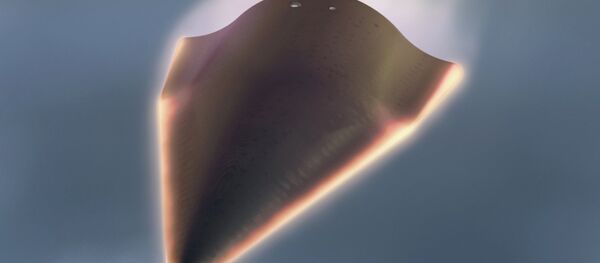Last August, Airbus filed a patent for a passenger jet that travels at speeds of Mach 4.5, or 4.5 times the speed of sound. Powered by onboard hydrogen, the concept plane would use a rocket engine to propel itself into the upper atmosphere before leveling off to a cruising speed of 3,000 miles per hour.
Aerospace company Lockheed Martin is developing an even faster military jet. Speaking to reporters, Lockheed’s chief executive Marillyn Hewson said that her company was on the verge of a major breakthrough.
"We are now producing a controllable, low-drag, aerodynamic configuration capable of stable operations from takeoff to subsonic, transonic, supersonic and hypersonic, to Mach 6," she claimed.
"We’re proving a hypersonic aircraft can be produced at an affordable price. We estimate it will cost less than $1 billion to develop, build, and fly a demonstrator aircraft the size of an F-22."
The key problem facing hypersonic aircraft is making a stable “scramjet” engine, which funnels oxygen from outside air to power the aircraft. Lockheed claims to have found a solution, though Hewson didn’t go into specifics.
Other breakthroughs include new thermal protection systems, key for defending against friction at high speeds, as well as innovative aerodynamic shapes, navigation control improvements, and long-range communication capabilities.
While the first consideration for the Pentagon is military applications, Hewson said that the technology could ultimately apply to civilian use.
"The technology could also enable hypersonic passenger flights, and, even easier, access to space," she said. "I am confident that Lockheed Martin has the technical expertise to make it happen."
The defense contractor plans to develop its aircraft throughout the 2020s, with hypersonic planes ready to enter service in the 2030s.
"We actually feel that we’ve made substantial progress in all the technologies associated with hypersonics," said Rob Weiss, executive vice president of Lockheed arm Skunkworks, according to Defense News.
"There’s a number of challenges in the technologies, the propulsion, the materials that have to deal with the high temperatures, and we’re at a point now where those technologies are mature, and therefore we feel very confident that we can field and successfully fly a hypersonic vehicle."
Still, Lockheed may be far behind Chinese defense companies. Last November, Beijing conducted its sixth test flight of the DF-ZF, a hypersonic glide vehicle.
"The DF-ZF is an ultra-high-speed missile allegedly capable of penetrating US air defense systems based on interceptor missiles," Bill Gertz wrote for the Washington Free Beacon.
"The DF-ZF was tracked by US intelligence agencies and flew at speeds beyond Mach 5, or five times the speed of sound."







